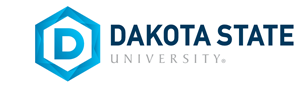Date of Award
Winter 11-21-2019
Document Type
Dissertation
Degree Name
Doctor of Philosophy in Information Systems (PhDIS)
Department
Business and Information Systems
First Advisor
Cherie Noteboom
Second Advisor
Omar El-Gayar
Third Advisor
Kevin Streff
Fourth Advisor
Joshua Stroschein
Fifth Advisor
Andy Igonor
Abstract
Increased demand in the cybersecurity workforce requires a significant response from colleges and universities in order to meet that demand. The federal government has emphasized cybersecurity education at all levels as a way to meet that demand, yet there is wide variance in curriculum defined by academics, industry, and government organizations. While there are many curriculum standards, little research has been conducted to investigate the drivers for curriculum adoption. This study aims to discover what factors influence the adoption of new curriculum at the undergraduate level through a quantitative adaptation and application of existing technology adoption models (e.g. UTAUT, UTAUT2, TRA, TPB, TAM) to the domain of curriculum adoption. It is hypothesized that many of the same factors that drive technology adoption also drive curriculum adoption with the addition of altruistic motivation of the faculty member on behalf of the student. The survey-based study employs a path model analyzed using partial least squares structural equation modeling. Of the nine hypotheses derived from technology adoption, three were directly supported and one was partially supported with student performance expectancy and facilitating conditions standing out as the most influential exogenous constructs. If it is desirable to drive toward standardized cybersecurity curriculum, this work will benefit standards bodies, accreditors, university leaders, and the federal government to determine the factors that drive adoption to direct resources appropriately.
Recommended Citation
Whittaker, Todd A., "Factors Influencing Curriculum Adoption in 2- and 4-year Undergraduate Cybersecurity Programs" (2019). Masters Theses & Doctoral Dissertations. 386.
https://scholar.dsu.edu/theses/386

